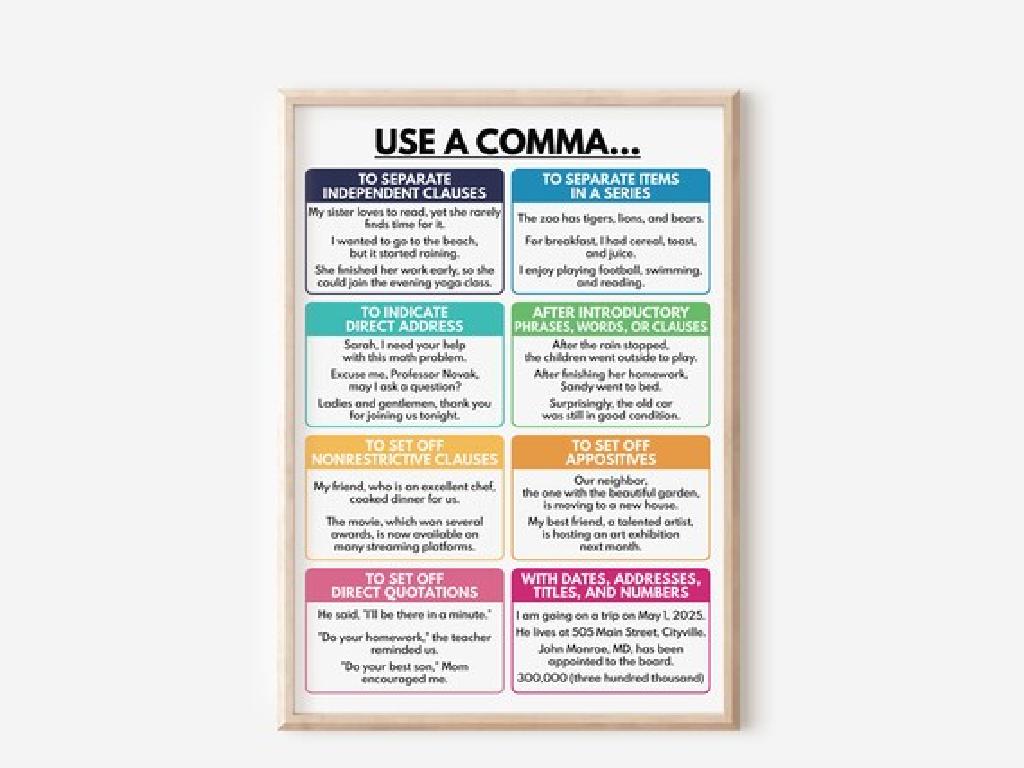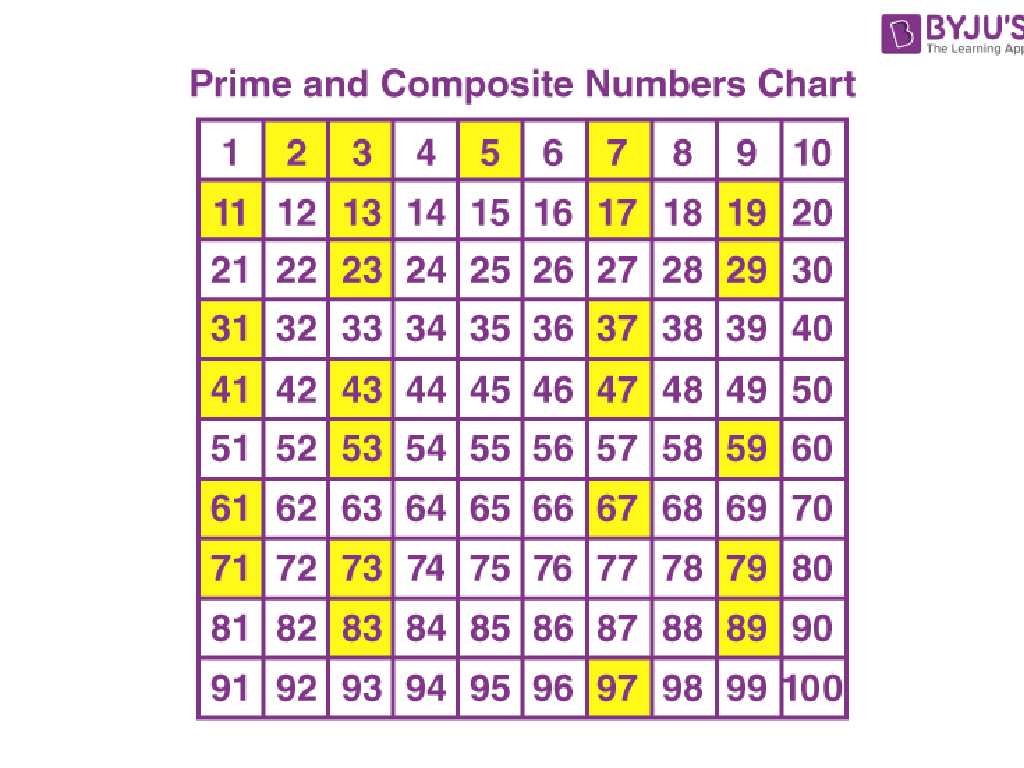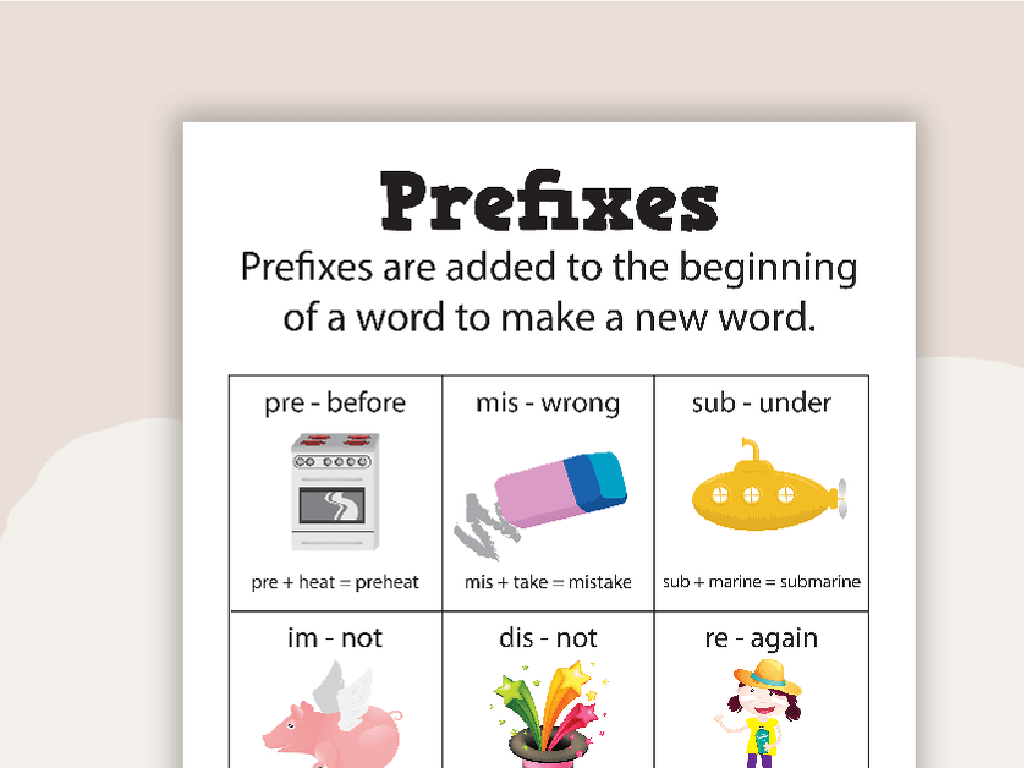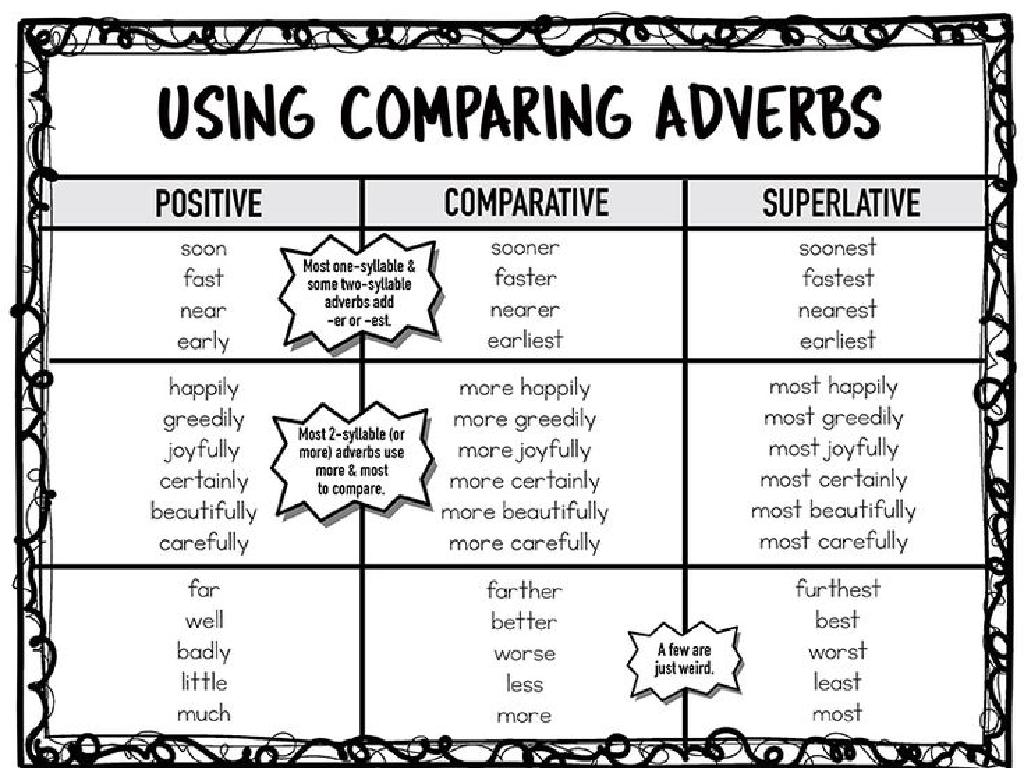Divide Decimals By Whole Numbers: Word Problems
Subject: Math
Grade: Seventh grade
Topic: Operations With Decimals
Please LOG IN to download the presentation. Access is available to registered users only.
View More Content
Dividing Decimals by Whole Numbers
– Grasp the concept of decimals
– Focus: Decimal division by whole numbers
– Divide a decimal by a non-decimal number
– Real-world uses of decimal division
– Used in money transactions, measurements
– Practice with word problems
– Solve problems related to everyday scenarios
|
This slide introduces the concept of dividing decimals by whole numbers, a key skill in seventh-grade math. Start by ensuring students have a solid understanding of what decimals represent. The focus of today’s lesson is on the method of dividing a decimal number by a whole number, which is similar to dividing whole numbers but requires attention to the placement of the decimal point in the quotient. Highlight the importance of this skill in real-life situations such as handling money, cooking, and making measurements. Provide word problems that mimic real-life scenarios to help students apply what they’ve learned. Encourage students to think about where they encounter decimals in their daily lives and how division plays a role in those situations.
Review of Decimals: Division in Focus
– Understanding decimals
– Decimals represent fractions of a whole number.
– Decimal places explained
– Tenths, hundredths, thousandths denote decimal places.
– Recap: Multiplying decimals
– Review how to multiply decimals step by step.
– Division with decimals
– Learn to divide decimals by whole numbers.
|
This slide is a refresher on the concept of decimals, which is crucial for understanding how to divide them by whole numbers. Begin by explaining that decimals are a way of expressing fractions in a base-10 system. Clarify the meaning of decimal places, emphasizing the value of each position to the right of the decimal point. Quickly recap the process of multiplying decimals, as this will help students understand the inverse operation of division. Finally, introduce the concept of dividing decimals by whole numbers, setting the stage for solving word problems. Provide examples and ensure students grasp each step before moving on to practical applications.
Dividing Decimals by Whole Numbers
– Steps to divide decimals
– Align the decimal point and divide as with whole numbers.
– Place value’s role in division
– Understanding place value ensures accurate decimal placement.
– Example: Divide 3.75 by 5
– 3.75 ÷ 5 = 0.75. How? Place the decimal point directly above in the answer.
– Practice with similar problems
|
This slide introduces the concept of dividing decimals by whole numbers. Start by explaining the steps involved in the division process, emphasizing the alignment of the decimal point. Highlight the importance of place value, as it is crucial for placing the decimal correctly in the quotient. Use the example 3.75 ÷ 5 to illustrate the process, showing students how to carry the decimal point up into the answer. Encourage students to practice with additional problems to reinforce the concept. Provide a variety of examples and ensure they understand that the process is similar to dividing whole numbers, with the key difference being the placement of the decimal point.
Dividing Decimals by Whole Numbers: Word Problems
– Comprehend the problem statement
– Read carefully to grasp what the problem is asking.
– Pinpoint the relevant numbers
– Look for the decimal and whole number that you’ll divide.
– Execute division to find the solution
– Use long division or a calculator to divide the decimal by the whole number.
– Check your answer for accuracy
– Always go back to ensure your solution makes sense in the context of the problem.
|
This slide is aimed at guiding students through the process of solving word problems that involve dividing decimals by whole numbers. Start by understanding the problem: what is being asked and what information is given. Next, identify the key numbers involved in the problem, specifically the decimal that needs to be divided and the whole number divisor. Teach students the method of long division for decimals and how to use a calculator correctly for division. Emphasize the importance of checking their work by verifying that the answer fits logically within the context of the problem. Provide examples of word problems and walk through them together as a class. Encourage students to practice with a variety of problems to build confidence.
Dividing Decimals by Whole Numbers
– John’s rope problem
– John has 2.5m of rope, cuts into 5 pieces. How long is each?
– Identify decimal and whole number
– Decimal: 2.5 (rope length), Whole number: 5 (pieces)
– Step-by-step solution
– 2.5 divided by 5 equals 0.5. Each piece is 0.5 meters long.
|
This slide presents a word problem involving the division of a decimal by a whole number. Start by reading the problem about John’s rope to the class. Then, guide students to identify the decimal (2.5 meters of rope) and the whole number (5 pieces) involved in the problem. Walk through the problem-solving process step by step, showing how to divide the total length of the rope by the number of pieces to find the length of each individual piece. Emphasize the importance of understanding the problem context and organizing information before solving. Encourage students to visualize the problem, perhaps by drawing a diagram, to aid their comprehension.
Dividing Decimals: Juice Jug Problem
– Jug with 4.8 liters of juice
– Each glass holds 0.6 liters
– Visualize dividing jug into glasses
– Imagine pouring juice into glasses, one by one
– Calculate number of glasses filled
– 4.8 ÷ 0.6 = ? Use long division to solve
|
This slide presents a word problem involving the division of decimals. The problem is about dividing 4.8 liters of juice into glasses that each hold 0.6 liters. Start by asking students to visualize the problem, perhaps by drawing a jug and glasses on the board. Then, guide them through the division process. Emphasize the importance of aligning decimal points and using long division. The answer, which is 8, shows that 8 glasses can be filled. This exercise will help students understand how to divide a decimal by a whole number in a practical context. Encourage students to come up with similar word problems and solve them as a class.
Dividing Decimals by Whole Numbers: Practice
– Divide 7.35 by 7
– How many times does 7 fit into 7.35?
– Cake division into 8 pieces
– Each piece equals 3.6 kg ÷ 8
– 0.96 divided by 3
– What is 0.96 split into 3 equal parts?
|
This slide presents students with practice problems to apply their knowledge of dividing decimals by whole numbers. Problem 1 is a straightforward division, reinforcing the concept of dividing a decimal by a single-digit whole number. Problem 2 applies division to a real-world scenario involving equal portions of a cake, which helps students understand practical applications of the concept. Problem 3 provides another example of dividing a smaller decimal by a whole number, emphasizing the process and calculation skills. Encourage students to show their work step by step and to check their answers by multiplying the quotient by the divisor. Provide additional similar problems for students who finish early or need extra practice.
Class Activity: Let’s Divide!
– Pair up and solve decimal problems
– Present your solutions to the class
– Discuss various solving methods
– Consider long division, estimation, and calculator use
– Reflect on different approaches
– Why did some pairs solve the problems differently?
|
This activity is designed to foster collaborative problem-solving and to enhance understanding of decimal division through practice. Students will pair up and work through five word problems involving decimal division. After solving, each pair will present their solutions, explaining their thought process and the steps they took. Encourage discussion on the different methods used, such as long division, estimation, or calculators, and have students reflect on why different approaches may have been taken by different pairs. This will help students see the variety of ways to approach a problem and understand the importance of clear mathematical communication. Possible activities: 1) Comparing grocery bills, 2) Dividing a restaurant bill, 3) Sharing the cost of a gift, 4) Splitting quantities in recipes, 5) Allocating time for a schedule.
Wrapping Up: Decimal Division Mastery
– Review of decimal division by whole numbers
– Emphasize the value of consistent practice
– Homework: 10 decimal division problems
– Solve problems involving real-world scenarios
– Aim for accuracy and understanding
– Check work for correct decimal placement
|
As we conclude today’s lesson on dividing decimals by whole numbers, it’s crucial to recap the steps involved in the process. Emphasize to students the importance of practice in mastering this skill, as it is foundational for more advanced math concepts. For homework, students are assigned 10 word problems that apply decimal division in various contexts, encouraging them to think critically about how this operation is used in real life. Remind them to pay close attention to where they place the decimal in their answers, as precision is key. During the next class, we’ll review the homework answers and address any common mistakes or misconceptions.






